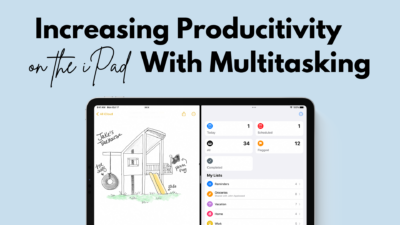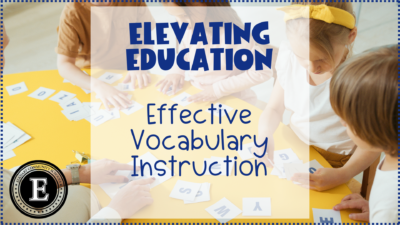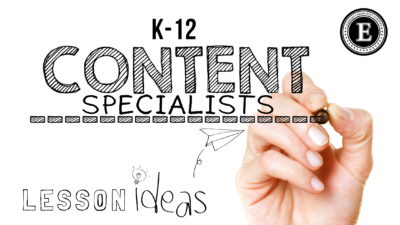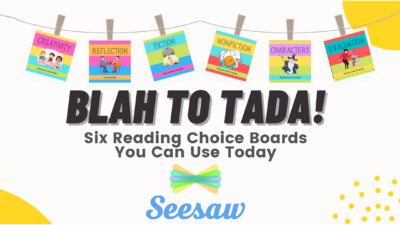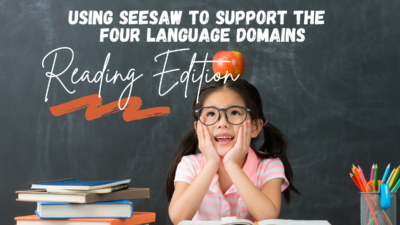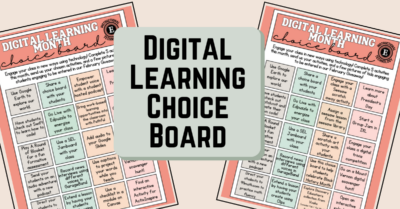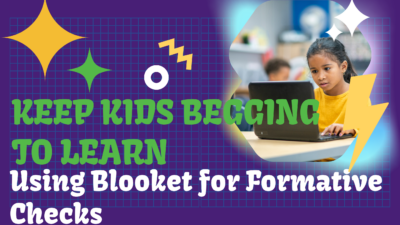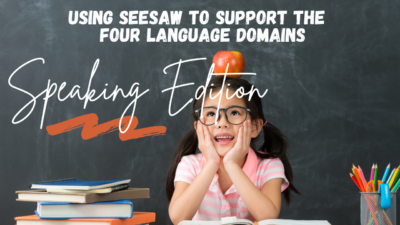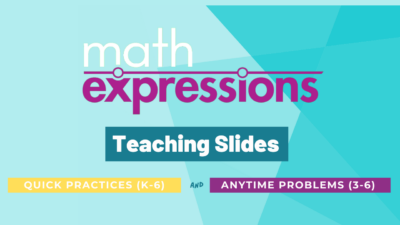elementary
Increasing Productivity on the iPad with Multi-Tasking
We all know that keeping students engaged and productive on technology can sometimes feel a bit like a challenge not worth taking on. But fear not, because the iPad might just have a secret weapon up its sleeve: Split Screen on the iPad! This handy feature allows students to divide their screen between two apps, making multitasking a breeze. From researching and note-taking to collaborating on projects, Split Screen empowers students to stay organized and on top of their game. So, let’s explore how embracing Split Screen can help you help your students thrive in and out of the classroom!...
Three Simple iPad Tools that Can Change the Game for Early Learners
Finding the right balance between using technology in an early learner classroom has always been a challenge. Finding tools and strategies that give you the most bang for your buck is critical. Below, you’ll see three of my quickest, high-impact technology usage in the early learner classroom! 1. Using a timer Use the iPad to display a visual timer. Having a visual or audio timer when working on a specific task can help students develop time management skills and can focus their attention on completing assignments. They also help support self-regulation and motivation by explicitly showing time expectations and facilitating...
Elevating Education: Effective Vocabulary Instruction
Let’s delve into a topic that lies at the heart of effective teaching: vocabulary instruction. We all understand its importance—it’s essential for comprehension, expression, and critical thinking. But how do we ensure our instruction isn’t just about exposure but truly facilitates understanding and retention? In this post, we’re taking a deep dive into the art and science of vocabulary teaching. We’ll explore evidence-based strategies, practical methodologies, and insights to enhance your instructional practices. Why Vocabulary Instruction? Teaching vocabulary is essential for fostering academic success and narrowing the pervasive vocabulary gap observed among students. Research indicates stark differences in vocabulary knowledge...
A Taste of DOT: Blog Posts from ECS Content Specialists
Our Content Specialists have created blog posts. Below is a short “tasting” of each blog article and you can click to read more! Enjoy the tasting. Elementary K-6 Closing the Gap: Reading Strategies for ALL Students | Anita Pratt The Science of Reading is gaining recognition and support from more and more educators across the country. Research is suggesting that our brains are not wired to learn to read the same way we learn to talk. We learn to talk by listening to others and following their lead, but reading has to be explicitly taught. Phonics has to be systematically...
Reading Response Choice Boards in Seesaw
Are you looking for new ways to reach students, especially those fast finishers / high-performers? Do you need ways to differentiate tasks without requiring a ton of extra time? Maybe you need something for your students to work on that is meaningful and not just a time-filler? Why not use a choice board! Choice boards allow students to make choices in their learning, which amps up motivation and engagement. When students are given a menu of options, they feel more in charge of their learning and often put forth more effort. As a teacher, I also like how I can...
Using Seesaw to Support the Four Language Domains: Writing Edition
Seesaw is an amazing place to include student writing. When thinking about writing lessons, we need to keep in mind that writing involves not only putting thoughts and ideas into words in written form, but also knowing & using the appropriate vocabulary, spelling, and grammar to convey meaning, knowing and using the appropriate form for the type of writing, and the difference between formal and informal writing. It also includes the skills of revising, editing, and publishing.
Using Seesaw to Support the Four Language Domains: Reading Edition
The language domains, listening, speaking, reading, and writing, are the 4 ways that people can interact with language. Two of these skills, speaking and writing, are described as productive skills as we create language with each of these. The other two skills, listening and reading, are receptive skills because we use these skills to receive information from an outside source. In this post, we will focus on ways that you can practice the language domain of reading by using Seesaw.
The top three Epic features that I didn’t utilize when teaching and should have.
We talk about accessible learning in our department possibly daily. It comes up in almost every conversation we have. Despite this, the one thing we’ve never said about accessible learning is that it’s easy because frankly, it isn’t. Ensuring that all of your students, regardless of ability and language, have the same level of access to content is a huge challenge for a teacher. One free tool for teachers that can help to bridge that gap is Epic. Epic is a freemium tool (keep an eye out for the “🔒Unlimited” books that are not available with the free account) that...
February is Digital Learning Month
Did you know that February is Digital Learning Month? We have some fun choice boards with helpful links and resources for you to use to help you become a Digital Learning Superstar! ⭐️✨ 🍎 Elkhart Teachers: Choose 5 of the options and send us your pictures to be entered into our giveaway! Just click on the image and it will open in a new tab so you can use the links. 👇🔗 Elementary Teachers Secondary Teachers Elementary Administrators Secondary Administrators
Keep Kids Begging to Learn: Using Blooket as a Formative Check
Need a fun way to do a quick formative assessment? Try out Blooket as a fun way to check what your students know in the moment! Blooket is a game-based, freemium program (meaning you can pay for premium, but the free version is still amazing) that keeps kids begging to play “one more round!” How to start a Blooket: Create or Discover a Set When looking to start with Blooket, you first need to decide if you want to create your own set or discover a set that has already been created. I recommend taking a peek at already created...
Using Seesaw to Support the Four Language Domains: Speaking Edition
The language domains, listening, speaking, reading, and writing, are the 4 ways that people can interact with language. Two of these skills, speaking and writing, are described as productive skills as we create language with each of these. The other two skills, listening and reading, are receptive skills because we use these skills to receive information from an outside source. In this post, we will focus on practicing the language domain of speaking and how Seesaw can help you meet this need.
Using Seesaw to Support the Four Language Domains: Listening Edition
At Elkhart Community Schools, we have a surprisingly large population of English Language Learners for a small midwest town. Because of this, we have to be very intentional about planning for and utilizing the four language domains to help boost understanding of the English language when providing content to students. In this post, we will focus on practicing the language domain of listening and how we can use Seesaw to help support this domain.
Save Time With Digital Teaching Slides for Quick Practices and Anytime Problems in Math Expressions
Do you remember hearing “Do The Blue” but don’t remember what it refers to? Quick Practices (K-6th), Daily Routines (K-2nd), and Anytime Problems (3rd-6th) are all parts of the “Doing the Blue” section of lessons in Math Expressions. “Doing the Blue” are the main components of the lesson that should be taught. Quick Practices, Daily Routines, and Anytime Problems are an important part of the process and student learning in math. These practices and routines focus on concepts and skills throughout the year that are needed for student mastery. They build classroom belonging and develop student leaders, as well as...
